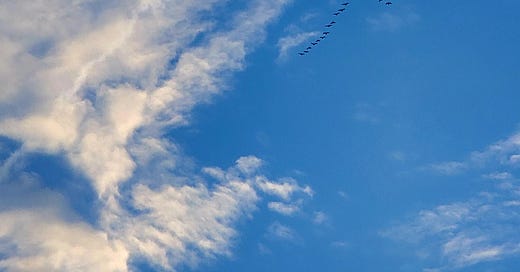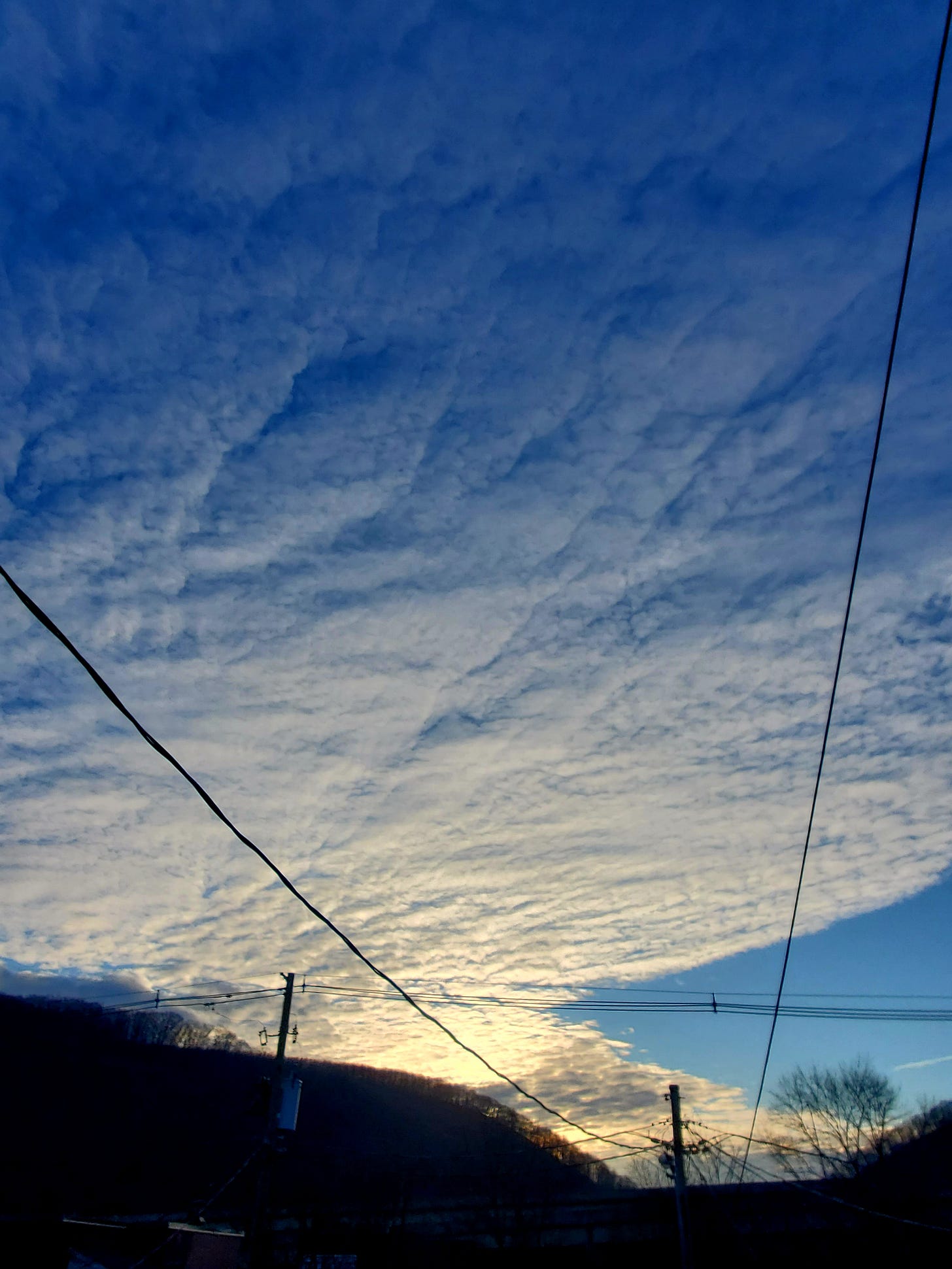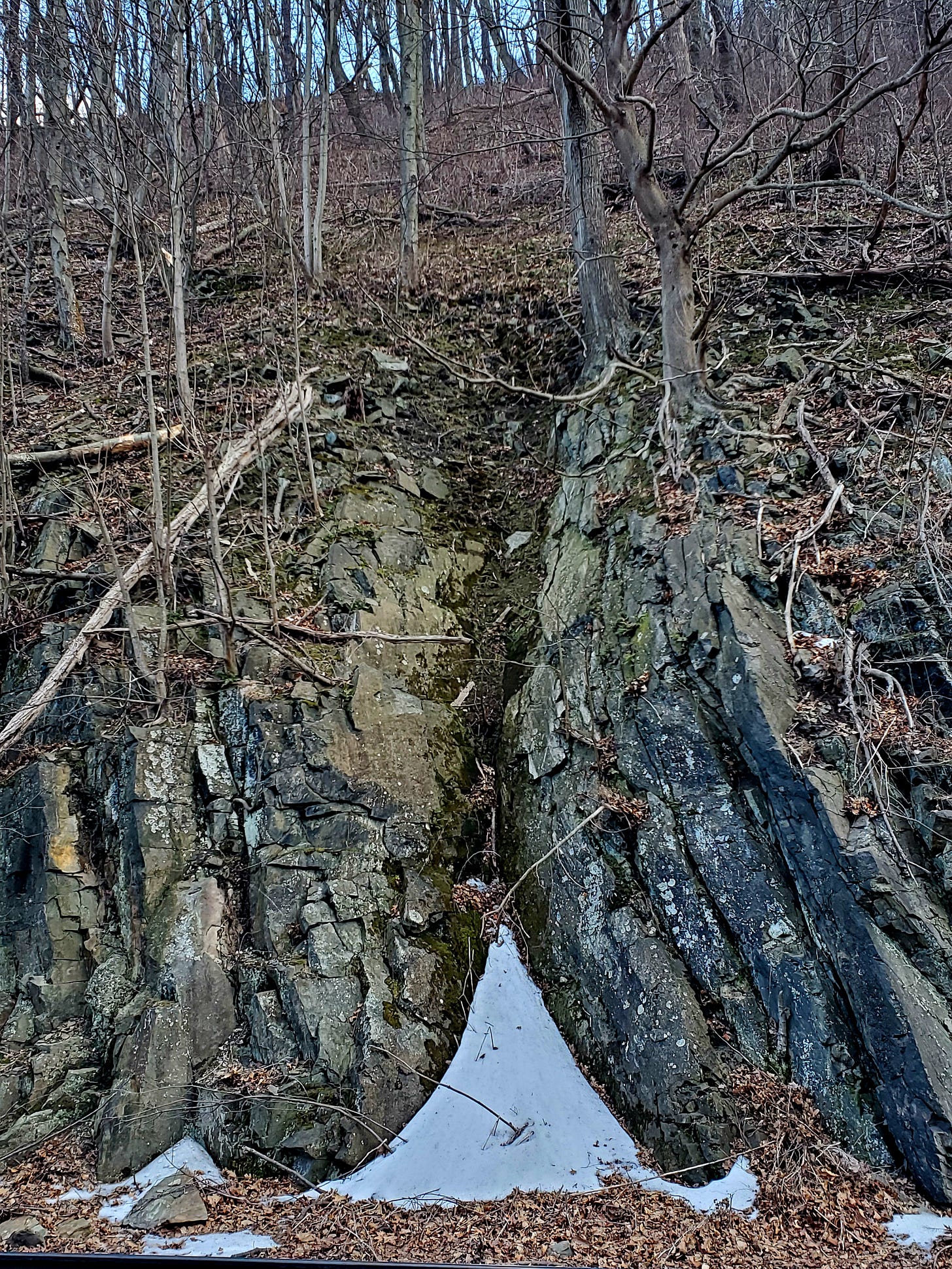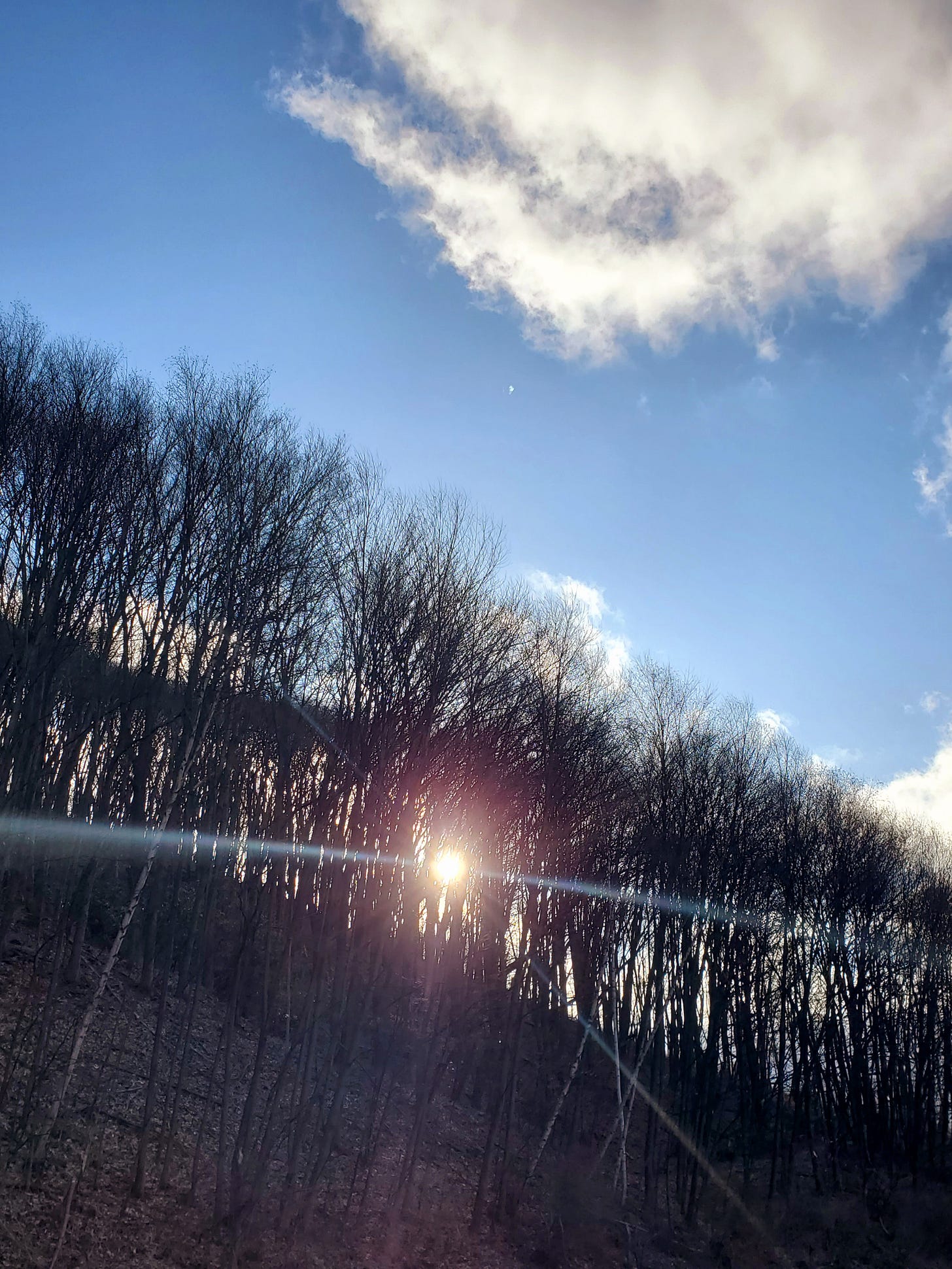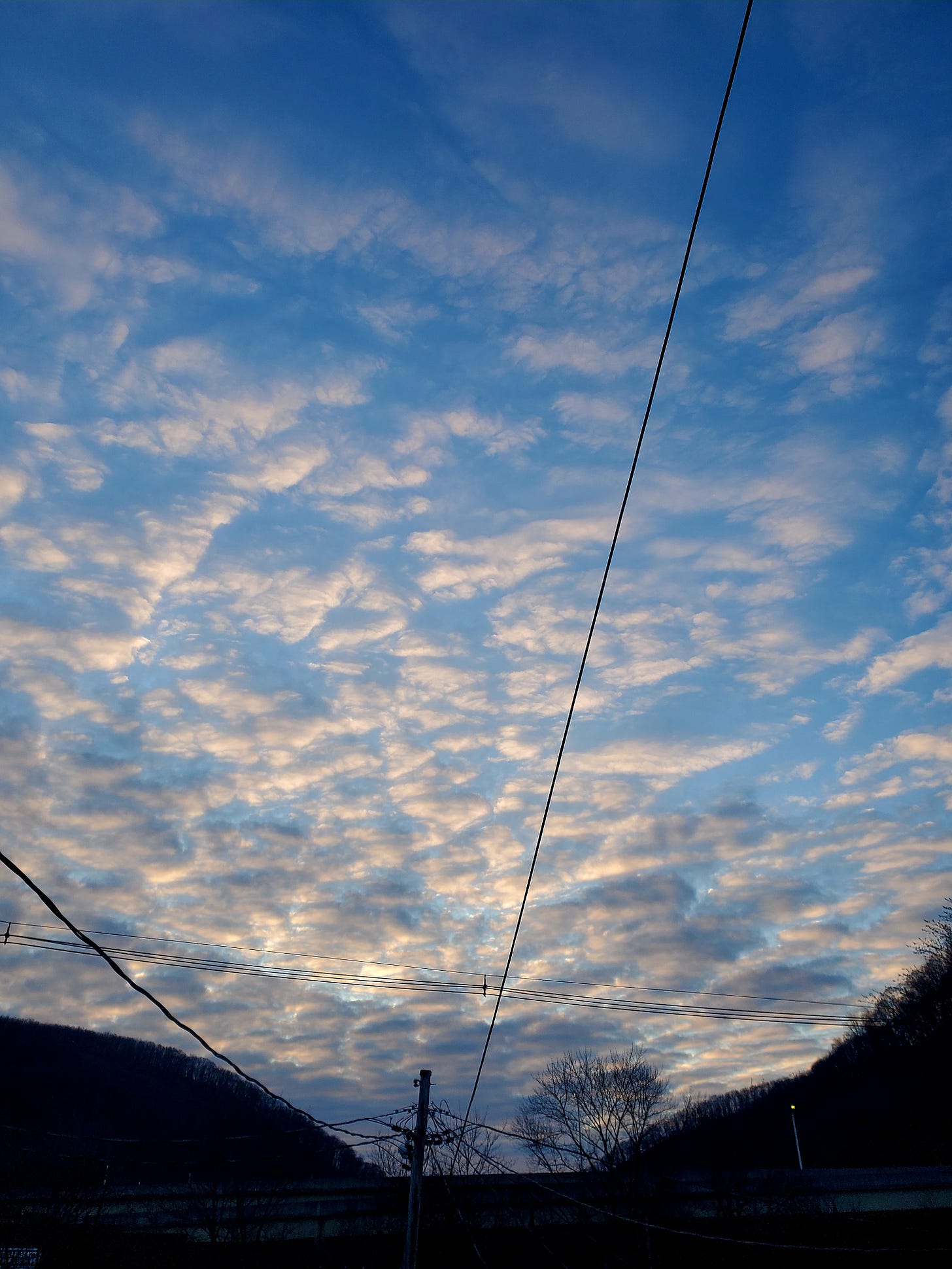Leo's winds
After a brief warm spell, temperatures dipped through the end of February, and the birds seemed to freeze in their tracks. The other, more logical possibility is that I didn’t get out much to see them, and when I did, there was nothing new. Nevertheless, the spring blackbird and vulture roosts didn’t go anywhere after their initial re-occupation last week.
Rarities No More
On the 26th, a Wednesday, Dave came upon four Red-headed Woodpeckers in an oak deadening along the crest of Laurel Ridge. Later on the same walk, he saw two more at the Far Field. Together, these were the single largest one-day eBird count for Blair County of this once-scarce species. Before reaching his house, he flushed two Ruffed Grouse.
Casual encounters with both species have become markedly more frequent recently. Whatever else is wrong with the world, it is some considerable comfort that these two are on the rebound.
Avian Equinox
Some time around March 1, diurnal bird vocalizations reach an unbroken 12-hour stretch, at least when you live next to a Song Sparrow population with some street lights to help out. By March 4th, they’re already singing over by the bank by 5:20 AM, whereas they didn’t start up until a quarter to six last week. On the clear evening of the 3rd, the last starlings don’t go to roost until around 6 PM, when a robin or two is still making a racket.
By the rainy morning of the 5th, American Robins are singing not long after 5 AM. Spring creeps closer.
March First
A cold and rainy start to meteorological spring does not deter eight Common Grackles from their first courtship showing of the year, in a familiar location on top of the tallest sycamore. A few males clamber about, and a few females, while the European Starlings are relegated to lower branches. The rain turns to thick snow.
All the nastiness blows away by the afternoon and the temperature drops below freezing. I bundle up a bit and hit the tracks in the teeth of the gale. The winds aloft are blowing hard enough to push a small flock of Canada Geese southward down the valley, immediately followed by 13 off-kilter Ring-billed Gulls, glistening white in the brilliant sun. Turkey Vultures are also barely staying the course.
All the action’s up above. An adult Bald Eagle rushes over, and then a trio of Black Vultures, the first in almost a month.
Much later, a few flocks of Red-winged Blackbirds and grackles, with at least one Brown-headed Cowbird, return west to roost.
An Inexplicable Quarrel
The weather stays chilly for the next couple of days, and on the third’s crystal clear dawn, it’s back down in the teens. Tundra Swans and Canada Geese are heading north day and night now, despite the cold, and the first hour of light is a good time to see them. Sure enough, five Canadas appear on a northerly course not long after 6:30 AM, with a sixth bird in tow—whitish, possible a Snow Goose? They pass over the east end of town, and the white bird resolves into an American Herring Gull, with a wingspan nearly as long as a Canada’s. Flying along with the quintet, it’s also diving at them, spiraling and slashing as they tumble to evade it. The odd tableau passes quickly out of sight over the rooftops.
I can’t come up with a reason for this behavior. Gulls and geese can be aggressive toward each other in feeding and breeding areas, but in the middle of a migratory flight? The gull is definitely not a local, not defending territory, not breeding, and not competing for food. None of the possible explanations I can come up with are anything more than fanciful.
Several more flocks of geese go over, some on the northerly migrant course and a few that appear to be locals, circling around at lower altitudes. Three male Common Mergansers go over as well, and as they inevitable follow one of the rivers after coming through the Gap, it’s hard to know if they are locals or migrants. Mallard numbers, however, do definitely seem to include migrants. Small flocks of a half-dozen or less follow the northerly bearing, while the local dozen, including the piebald one who seems to be a female, as she has paired in recent days with a male, is up and down and all about town.
In the evening, Turkey Vultures returning to roost are now up to 30, grackles are at 120, and Red-winged Blackbirds are at 40. A Killdeer’s faint call over toward Grazierville occasionally breaks through the wall of starling noise. While most of the starlings congregate for the last hour on the tall poplar and the tall sycamore, to my left and right, respectively, one lone fellow has taken to perching much closer to the balcony, in his own tree right next to the building, along the riverbank. He shows up every morning and every evening, and does a litany of songs, calls, and imitations. Occasionally, a few others show up, perhaps potential mates, and in the evening, he sometimes flies off to join the main groups, but inevitably comes back to his own perch before calling it a day.
The Common Ravens are over on their favorite roof, and some serious nuzzling is taking place again. One is repeatedly lifting up the feathers on the other’s back with its formidable beak. They’re too far away to hear, though. I’ve not seen them carrying any more nesting material, so I’m guessing they’re on to the next phase.
Just as I’m wrapping it up, a pair of Mourning Doves in breeding plumage rushes by and lands in a silver maple. They’ve been scarce this winter, but this could signal the beginning of courtship season, as I believe at least one pair usually nests nearby.
At Long Last, A Snow!
I walk out the balcony on the 4th, look up, and am greeted with the sight of 10 Canada Geese and a lone Snow Goose low over town, as if looking for somewhere to land. As easy and as random as that, a bird I’ve never actually been able to see in the hotspot, though I occasionally pick it up on the antenna. I missed it completely the last two years. We’re a bit west of the eastern population’s flight path, and too far east for the midcontinent hordes. There doesn’t seem to be any recipe for seeing the species predictably in Blair County, and today just feels like a stroke of luck. It also seems like a good omen for a waterfowl year that’s already yielded several early surprises.
The morning balcony count’s numbers tick up above 30 for the first time, as all the blackbirds, even a couple Rusties, go over. Grackles never seem to let up, with small flock after small flock dribbling eastward over the point of Sapsucker Ridge—212 in all. With the song of a FOY Fox Sparrow from along Bald Eagle Creek, the year’s species count reaches 70.

